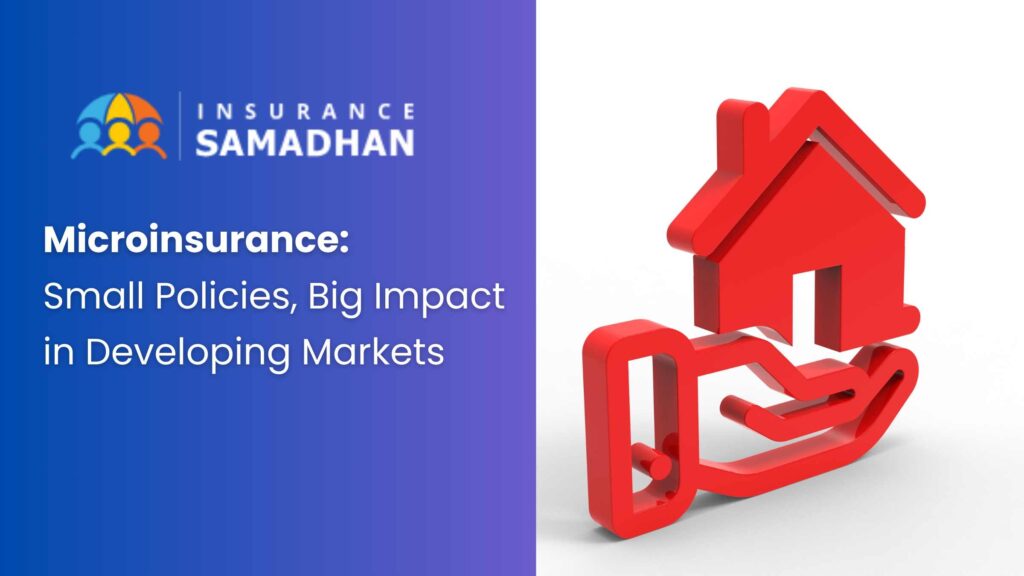
Microinsurance is one of the most effective means of supporting the population in developing countries in the field of financial services. These are mini-insurance covers meant to protect low-income persons and families against certain risks, providing a cushion that could be invaluable in the event of an accident. Now, it is time to move a little deeper and discover how these small policies – microinsurance – are changing the world.
Understanding Microinsurance
Microinsurance can be defined as insurance services that are targeted at low-income clients, where the cost of insurance is relatively low and the amount of indemnification is also much lower in comparison with the standard insurance services. These products have been designed to suit the needs and limitations of low-income groups of people.
Key characteristics of microinsurance include:
- Low premiums
- Simplified terms and conditions
- Easy-to-understand policy documents
- Streamlined claims process
- Innovative distribution channels
The Need for Microinsurance in Developing Markets
A large number of people in developing countries are considered to be living in poverty, earning less than two dollars a day. These people can easily lose their source of income due to sickness, injuries, or calamities which can lead to further economic losses. Microinsurance provides a crucial safety net, helping to:
- Minimise the risks of economic shocks
- Promote the development of commerce and investments in education.
- Improve health outcomes
- Enhance overall financial stability
Types of Microinsurance Products
Now, let us take a look at the risks that microinsurance covers. Some common types include:
- Health Microinsurance
Health microinsurance policies assist in providing for the necessities of healthcare by easing the burden incurred in healthcare costs by low-income earners. Such policies may include general health care, inpatient and sometimes even major diseases. If a policyholder falls sick, he or she can make medical claim insurance to cater for his or her expenses especially when the times are hard.
- Life Microinsurance
The life microinsurance covers families in the event of the policyholder’s death to minimise their risks. Such policies may contain an accidental death claim provision which is extra coverage in the event of such mishaps. Such coverage helps prevent cases of families sinking into poverty because of the loss of a breadwinner.
- Crop Microinsurance
Crop microinsurance for small-scale farmers mitigates against loss as a result of unfavourable weather or attack by pests. This type of insurance makes the farmers put their money into their crops since they know that they have a backup in case anything wrong.
- Property Microinsurance
Property microinsurance covers losses that may occur as a result of fire, theft or natural calamity. For the owners of small businesses and low-income residents, this coverage can be vital in the process of the restore after the disaster.
- Livestock Microinsurance
Just like crop insurance, livestock microinsurance is an insurance product that aims to shield farmers from losses resulting from the death of their animals through disease or accidents. This coverage is especially useful in rural areas where livestock forms part of family wealth.
- Motor Microinsurance
In many developing countries, motorcycles and small vehicles are essential for transportation and livelihoods. Motor microinsurance provides affordable coverage for these vehicles. In case of an accident, policyholders can file a motor accident claim, helping them get back on the road quickly and continue earning their livelihood.
The Impact of Microinsurance
The introduction of microinsurance in developing markets has had a profound impact on individuals, families, and communities:
- Financial Resilience: Microinsurance helps low-income populations bounce back from financial shocks, preventing them from falling deeper into poverty.
- Health Outcomes: With health microinsurance, individuals are more likely to seek medical care when needed, leading to better health outcomes.
- Economic Growth: By providing a safety net, microinsurance encourages entrepreneurship and investment in small businesses.
- Women’s Empowerment: Microinsurance has been particularly impactful for women, providing them with financial protection and encouraging their participation in economic activities.
- Agricultural Productivity: Crop and livestock microinsurance has led to increased investment in agriculture, boosting productivity and food security.
Challenges in Microinsurance
Despite its potential, microinsurance faces several challenges in developing markets:
- Low Awareness: Many potential beneficiaries are unaware of microinsurance or don’t understand its benefits.
- Trust Issues: In some communities, there’s a lack of trust in financial institutions, making it difficult to sell insurance products.
- Distribution Challenges: Reaching rural and remote populations can be logistically challenging and expensive.
- Regulatory Hurdles: In some countries, regulations are not adapted to microinsurance products, making it difficult for providers to operate.
- Sustainability: Balancing affordability for clients with profitability for insurers can be challenging.
Innovations in Microinsurance
To overcome these challenges, the microinsurance industry is constantly innovating:
- Mobile Technology: Many providers are leveraging mobile phones for policy sales, premium collection, and claims processing.
- Parametric Insurance: This type of insurance automatically pays out based on predefined parameters (like rainfall levels for crop insurance), simplifying the claims process.
- Bundled Products: Some providers are bundling insurance with other services (like microloans or mobile airtime) to increase uptake.
- Community-Based Models: Some microinsurance schemes are run by communities themselves, increasing trust and local ownership.
- Public-Private Partnerships: Governments are increasingly partnering with private insurers to expand microinsurance coverage.
The Future of Microinsurance
As technology advances and awareness grows, the future of microinsurance looks promising. Key trends to watch include:
- Increased Use of Data: Big data and AI will help insurers better understand risks and design more targeted products.
- Expansion of Coverage: We’re likely to see microinsurance expand into new areas, such as education insurance or old-age pensions.
- Greater Integration: Microinsurance is likely to become more integrated with other financial services, creating comprehensive financial solutions for low-income populations.
- Focus on Customer Education: There will likely be a greater emphasis on financial literacy and insurance education to increase uptake and effective use of microinsurance products.
The Role of Claims Settlement in Microinsurance Success
One of the critical factors in the success of microinsurance is the claims settlement process. The best insurance claim settlement practices in microinsurance often involve:
- Simplicity: Claims processes are kept as simple as possible, often requiring minimal documentation.
- Speed: Quick settlement of claims is crucial to maintain trust and demonstrate the value of insurance.
- Transparency: Clear communication about the claims process and decision-making helps build trust.
- Accessibility: Multiple channels for claim submission (including mobile) make it easier for policyholders to file claims.
Conclusion
Microinsurance represents a powerful tool for financial inclusion and poverty alleviation in developing markets. By providing affordable protection against key risks, these small policies are making a big impact on the lives of millions of low-income individuals and families. As the sector continues to innovate and expand, microinsurance has the potential to play an increasingly important role in building resilient communities and fostering sustainable economic development.
However, as with any financial product, there can sometimes be challenges in the claims process or disputes with insurance providers. This is where organisations like Insurance Samadhan can play a crucial role. Insurance Samadhan specialises in resolving insurance-related grievances and disputes, including those related to microinsurance products. Their expertise can be invaluable in ensuring that policyholders receive fair treatment and timely settlement of their claims, thereby maintaining trust in the microinsurance system and supporting its continued growth and impact in developing markets.
As we look to the future, the continued evolution and expansion of microinsurance, supported by fair practices and effective dispute resolution mechanisms, holds the promise of creating more financially secure and resilient communities across the developing world.





